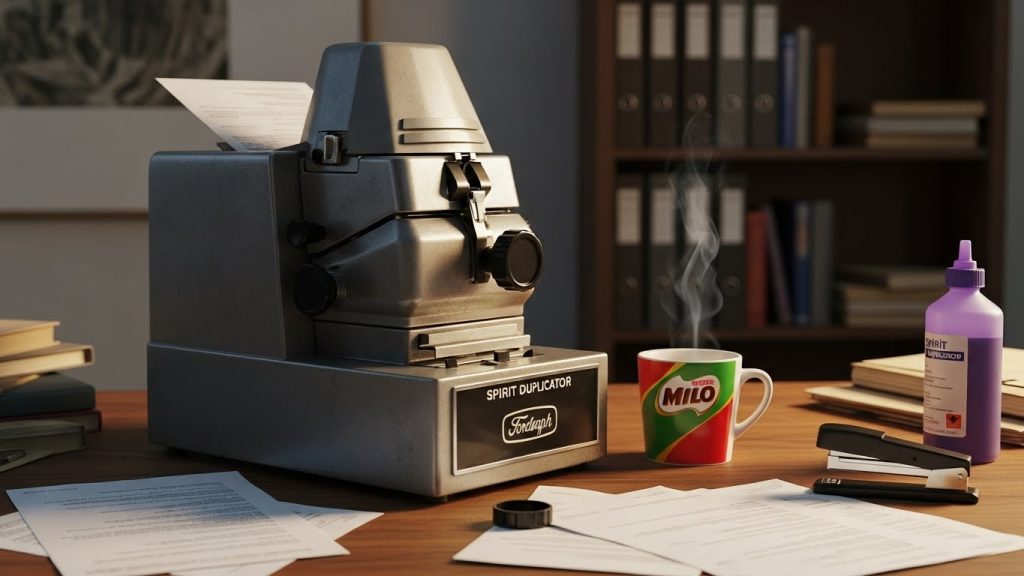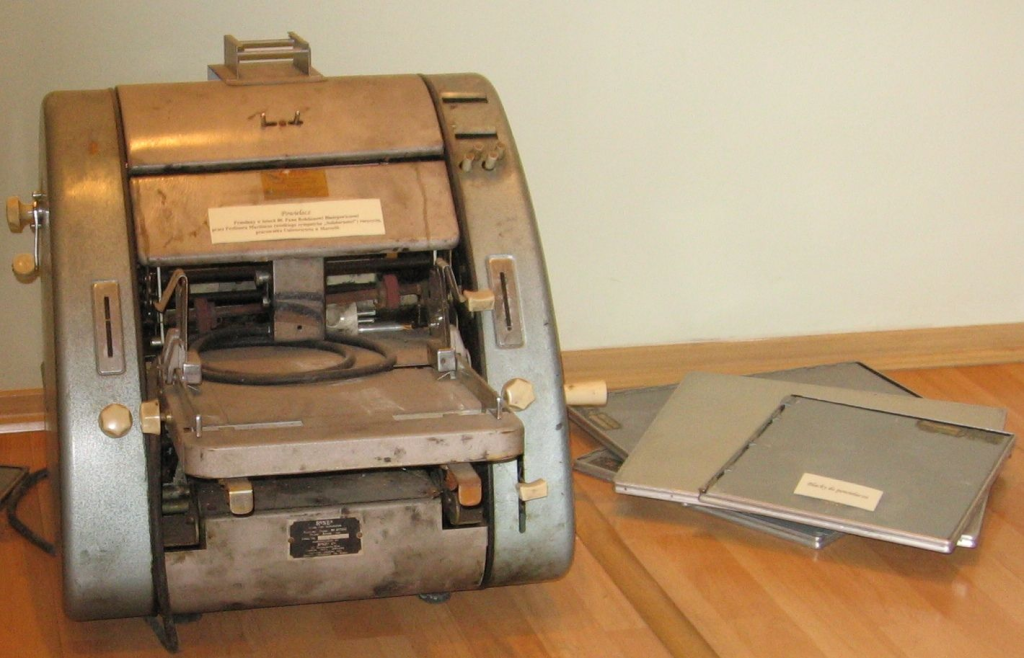
Long before photocopiers and laser printers became everyday tools, schools in Malaysia relied on a spirit duplicator, historically known as a Ditto Machine or Banda Machine. A quick prompt to ChatGPT:
Bro, in old offices/schools they used a machine to duplicate papers before photocopiers existed. What was that machine called, and how did it work
It led me to several answers
- A mimeograph (Gestetner) machine was a duplicator that printed copies using ink + a waxed stencil, and
- Spirit duplicator (Ditto machine / Banda machine) — purple ink
One line that instantly triggers my memory is: “If your memory involves purple worksheets, that’s the ditto/Banda machine.” A quick look at Wikipedia provides me with the information as below:
A spirit duplicator (also Rexograph and Ditto machine in North America, Banda machine and Fordigraph machine in the U.K. and Australia) is a printing method invented in 1923 by Wilhelm Ritzerfeld, which was used for most of the 20th century. The term “spirit duplicator” refers to the alcohols that were the principal solvents used in generating copies. ~ Spirit duplicator

How It Worked
The Fordigraph was a spirit duplicator commonly used in schools. Teachers prepared special wax-coated master sheets, carefully typed or written. Once mounted on the drum, the machine applied an alcohol-based solvent that dissolved a thin layer of dye from the master and transferred it onto each sheet of paper.
I recall passing by the printing room, where the pleasant scent lingered in the air, a sure sign that exams were on the way.
The Charm of Imperfection
Fordigraph copies had quirks. Text could fade after a few dozen runs, and the sweet chemical smell lingered in the classroom. Yet these “imperfections” became part of the ritual. Students linked the aroma and colour to exam season or new song sheets for assemblies. Holding a freshly duplicated page felt like holding a fragile yet meaningful piece of shared effort.
In Malaysia, the Fordigraph earned a local identity; teachers and students fondly called it mesin cetak. Fordigraph became part of the local school culture. Fast, affordable, and practical for small batches, it was ideal for everyday classroom use. (Teachers… I am referring to the wrong machine. Please correct me. I am not sure if it was a Banda Machine or a Gestetner Printer) – Mana nak ingat dah, tapi yang pasti both of these have very distinctive and pleasant smell.
Looking Back
Today, the copier machine feels almost mythical, replaced by photocopiers and digital printers. Yet its memory lingers in the purple text, the smell of solvent, and the anticipation of exam papers. For those who went to school in the 80s or maybe earlier, this machine is more than a duplicator—it is a symbol of resilience, community, and the tactile joy of learning.